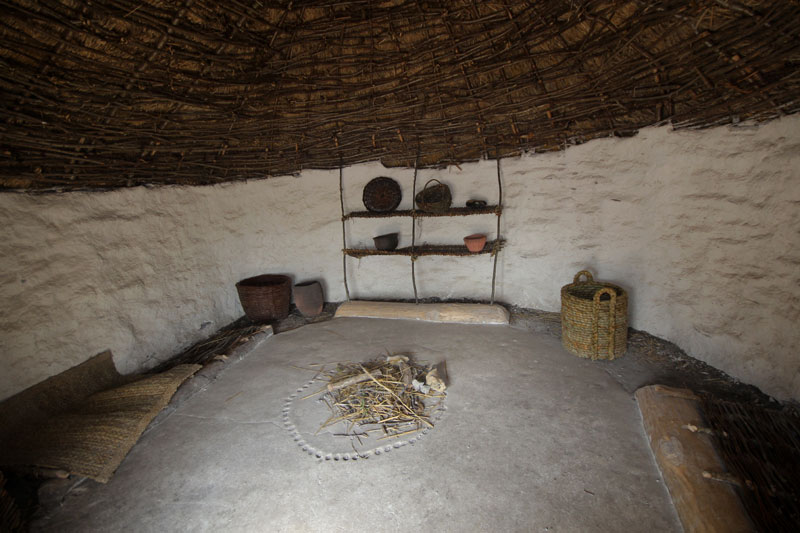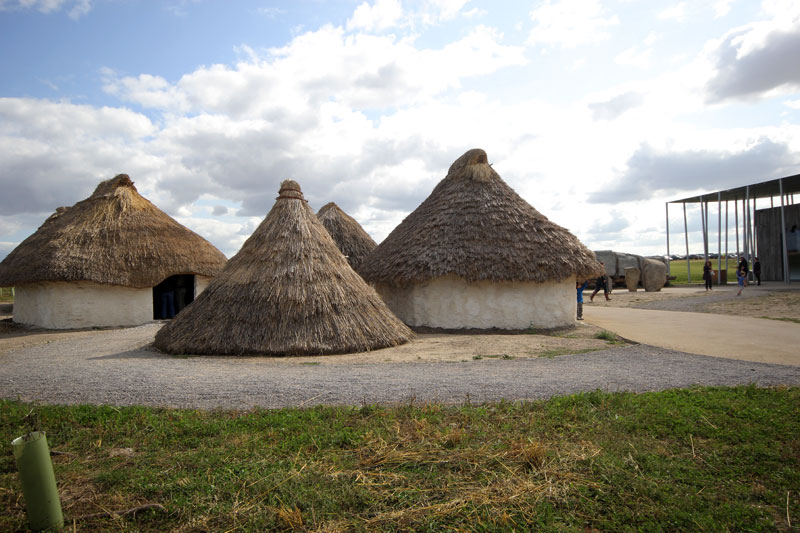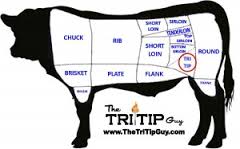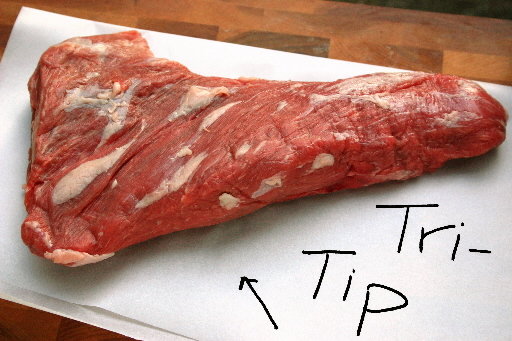It looks like you're using an Ad Blocker.
Please white-list or disable AboveTopSecret.com in your ad-blocking tool.
Thank you.
Some features of ATS will be disabled while you continue to use an ad-blocker.
5
share:
A new study confirms that Stonehenge was used as a ceremonial feasting center.
Its a neat look into the lives of the people who used the henges,
[
www.sciencedaily.com...
would loved to have had me some prehistoric brisket or tri tips
A team of archaeologists at the University of York have revealed new insights into cuisine choices and eating habits at Durrington Walls -- a Late Neolithic monument and settlement site thought to be the residence for the builders of nearby Stonehenge during the 25th century BC.
Together with researchers at the University of Sheffield, detailed analysis of pottery and animal bones has uncovered evidence of organised feasts featuring barbeque-style roasting, and an unexpected pattern in how foods were distributed and shared across the site.
Chemically analysing food residues remaining on several hundred fragments of pottery, the York team found differences in the way pots were used. Pots deposited in residential areas were found to be used for cooking animal products including pork, beef and dairy, whereas pottery from the ceremonial spaces was used predominantly for dairy.
Its a neat look into the lives of the people who used the henges,
[
Unusually, there was very little evidence of plant food preparation at any part of the site. The main evidence points to mass animal consumption, particularly of pigs. Further analysis of animal bones, conducted at the University of Sheffield, found that many pigs were killed before reaching their maximum weight. This is strong evidence of planned autumn and winter slaughtering and feasting-like consumption.
The main methods of cooking meat are thought to be boiling and roasting in pots probably around indoor hearths, and larger barbeque-style roasting outdoors -- the latter evidenced by distinctive burn patterns on animal bones.
Bones from all parts of the animal skeleton were found, indicating that livestock was walked to the site rather than introduced as joints of meat. Isotopic analysis indicates that cattle originated from many different locations, some far away from the site. This is significant as it would require orchestration of a large number of volunteers likely drawn from far and wide. The observed patterns of feasting do not fit with a slave-based society where labour was forced and coerced, as some have suggested.
Dr Oliver Craig, Reader in Archaeological Science at the University of York and lead author on the paper, said: "Evidence of food-sharing and activity-zoning at Durrington Walls shows a greater degree of culinary organisation than was expected for this period of British prehistory. The inhabitants and many visitors to this site possessed a shared understanding of how foods should be prepared, consumed and disposed. This, together with evidence of feasting, suggests Durrington Walls was a well-organised working community."
www.sciencedaily.com...
would loved to have had me some prehistoric brisket or tri tips
a reply to: punkinworks10
That's a great study and it gives a wonderful glimpse into Neolithic life. It's the sociological aspects which interest me the most - what cultural norms did they share, how did they function together as a group, what were their dreams? It's exciting to have a sense of an ancient celebration at harvest time, when the work for the year has been done and everyone can enjoy the results of their labour. Even more exciting to think that these celebrations still exist today as Samhain/Hallowe'en although the meanings may be different.
I love the thought of a milk-bar at Stonehenge, that is not what I would ever imagine happened there!
Great post, P x
That's a great study and it gives a wonderful glimpse into Neolithic life. It's the sociological aspects which interest me the most - what cultural norms did they share, how did they function together as a group, what were their dreams? It's exciting to have a sense of an ancient celebration at harvest time, when the work for the year has been done and everyone can enjoy the results of their labour. Even more exciting to think that these celebrations still exist today as Samhain/Hallowe'en although the meanings may be different.
I love the thought of a milk-bar at Stonehenge, that is not what I would ever imagine happened there!
Great post, P x
a reply to: punkinworks10
I just got all excited thinking you were inviting us all to a BBQ at the Henge lol.
Boo to you no burger for me no star or flag for you.
I just got all excited thinking you were inviting us all to a BBQ at the Henge lol.
Boo to you no burger for me no star or flag for you.
I think the food they used to serve at the old visitor centre when it was just across the road from Stonehenge had been sitting on the shelf since the
Henge was built,and was almost certainly the left overs from a neolythic barbeque..
The new one is a lot better.So as well as these replica dwellings showing how they lived back then,wouldn't it be good if they could serve authentic food from when it was built in the new visitor centre cafe?


The new one is a lot better.So as well as these replica dwellings showing how they lived back then,wouldn't it be good if they could serve authentic food from when it was built in the new visitor centre cafe?


edit on 14-10-2015 by Imagewerx because: (no reason given)
originally posted by: punkinworks10
a reply to: Imagewerx
thanks for images
Imagewerx,
You're welcome.More here....flic.kr...
edit on 14-10-2015 by Imagewerx because: (no reason given)
i am only just putting this out here no proof and i can't remember where i have heard it from but it sounds somewhat like a ritual of inviting the
gods to a feast and the worshipers sharing in it
originally posted by: punkinworks10
would loved to have had me some prehistoric brisket or tri tips
I'm just impressed that you know what a tri-tip is...must be from the West Coast?
originally posted by: SlapMonkey
originally posted by: punkinworks10
would loved to have had me some prehistoric brisket or tri tips
I'm just impressed that you know what a tri-tip is...must be from the West Coast?
Central cal for sure,
For those that are wondering what we are getting on about, a tri tip is a bottom sirloin.

Often labeled "Santa Maria steak", the roast is most popular in: The Central Coast of California, Central Valley regions of California and throughout the entire state

It's a cut that was popular on the Spanish Grant ranches of the central coast range.
25 years ago most people outside of central cal did not know what one was.
It's best suited to grilling on a hot open bed of coals.
I do a few different recipes,
And a good tri tip has not had the fat trimmed off, it has a layer of fat on one side.
Always grill fat side up.
A dry rub with Pappy's rub, a local favorite for more than 70 years, then marinate in a couple of pints of Newcastle for a few hrs.
Or Basque style, marinated in red wine and olive oil with salt pepper paprika oregano Garlic and parsley
There are two schools of thought on how to cook it,
One is low and slow,
I prefer to hot sear it fat side first, till it gets a little carbon going on, then flip it fat fat side up sear just till you get that light burn to it , then put the lid on the grill and bring the fire down to medium and baste with you favorite beverage, every ten minutes or so.
Cook till rare, remove from fire and wrap in foil mad let it push to medium.
If you like your beef well done its not the best cut, it gets kind of chewy at well done.
edit on p00000010k031042015Thu, 15 Oct 2015 12:03:56
-0500k by punkinworks10 because: (no reason given)
a reply to: punkinworks10
Yeah, I grew up in Bakersfield (haven't lived there since 1998) and have an aunt and had my grandparents who lived in Santa Maria.
Nice explanation, although I have ALWAYS trimmed off the fat and only used a dry rub (usually something simple like salt, garlic, parsley, coarse-ground black pepper) and cooked it slowly on low heat (well, relatively slowly--about 45 min.) flipping every 5-10 minutes or so. I've never had complaints or concerns about the way it has been cooked.
Slice that baby thin and slap it on a nice bun, or slice it thick and eat it like a steak. Either way, it's always juicy and always tasty.
NEVER OVERCOOK IT!!! Medium at most. I had to teach my dad that, as he used to make it medium-well or well done. It used to hurt my heart.
ETA: I live in the Cincinnati area now, and the Kroger grocery stores carry it intermittently, but it's always pre-seasoned and vaccu-sealed in a marinade. It's good, but I just want a raw, plan Tip so that I can do it my way. I couldn't find any this summer, and there are only one or two butchers I know of that even know what it is, let alone can cut it properly.
Also, I have done a few in the oven before (I hadn't re-purchased a grill yet after a local move) and it actually turned out alright, but you have to be strategic with the broiler at the end to give it some char, otherwise it just doesn't taste right.
Yeah, I grew up in Bakersfield (haven't lived there since 1998) and have an aunt and had my grandparents who lived in Santa Maria.
Nice explanation, although I have ALWAYS trimmed off the fat and only used a dry rub (usually something simple like salt, garlic, parsley, coarse-ground black pepper) and cooked it slowly on low heat (well, relatively slowly--about 45 min.) flipping every 5-10 minutes or so. I've never had complaints or concerns about the way it has been cooked.
Slice that baby thin and slap it on a nice bun, or slice it thick and eat it like a steak. Either way, it's always juicy and always tasty.
NEVER OVERCOOK IT!!! Medium at most. I had to teach my dad that, as he used to make it medium-well or well done. It used to hurt my heart.
ETA: I live in the Cincinnati area now, and the Kroger grocery stores carry it intermittently, but it's always pre-seasoned and vaccu-sealed in a marinade. It's good, but I just want a raw, plan Tip so that I can do it my way. I couldn't find any this summer, and there are only one or two butchers I know of that even know what it is, let alone can cut it properly.
Also, I have done a few in the oven before (I hadn't re-purchased a grill yet after a local move) and it actually turned out alright, but you have to be strategic with the broiler at the end to give it some char, otherwise it just doesn't taste right.
edit on 15-10-2015 by SlapMonkey because:
(no reason given)
a reply to: SlapMonkey
I usually pay homage to my west pacific islander heritage, and have it sliced thin with some steamed rice a nice ripe and salted tomatoe and some dry roasted green beans.
Then make French dips with any left overs.
Also a salt and pepper rub, marinated in a pint of Guinness with two shots of Jameson whiskey, mmmmmm good stuff
Slice that baby thin and slap it on a nice bun, or slice it thick and eat it like a steak. Either way, it's always juicy and always tasty.
NEVER OVERCOOK IT!!! Medium at most. I had to teach my dad that, as he used to make it medium-well or well done. It used to hurt my heart.
I usually pay homage to my west pacific islander heritage, and have it sliced thin with some steamed rice a nice ripe and salted tomatoe and some dry roasted green beans.
Then make French dips with any left overs.
Also a salt and pepper rub, marinated in a pint of Guinness with two shots of Jameson whiskey, mmmmmm good stuff
new topics
-
Watts home paranormal activity
Paranormal Studies: 1 hours ago -
So, what is really going on in South Korea ?
World War Three: 2 hours ago -
Congress Says the FBI is Covering Up Vital Info on the Jan 5th 2021 D.C. Pipe Bombs at RNC-DNC.
Political Conspiracies: 2 hours ago -
The trial on kids was stopped
Medical Issues & Conspiracies: 5 hours ago -
Orbs Appear And Form Triangle On Live Cam.
Aliens and UFOs: 7 hours ago -
Biden Has New Bizarre Injuries to His Face
Politicians & People: 8 hours ago -
Something is not adding up in regards to the H-1B commotion
General Conspiracies: 9 hours ago -
Elon Musk Calls for Tommy Robinson to be Freed - and Takes a Dig at Starmer
Politicians & People: 9 hours ago -
Biden to award Presidential Citizens Medal to Liz Cheney and Bennie Thompson
US Political Madness: 10 hours ago
top topics
-
Biden Has New Bizarre Injuries to His Face
Politicians & People: 8 hours ago, 11 flags -
Biden to award Presidential Citizens Medal to Liz Cheney and Bennie Thompson
US Political Madness: 10 hours ago, 9 flags -
Congress Says the FBI is Covering Up Vital Info on the Jan 5th 2021 D.C. Pipe Bombs at RNC-DNC.
Political Conspiracies: 2 hours ago, 9 flags -
The trial on kids was stopped
Medical Issues & Conspiracies: 5 hours ago, 9 flags -
Just learned a really helpful trick for internet searches
Computer Help: 16 hours ago, 7 flags -
Orbs Appear And Form Triangle On Live Cam.
Aliens and UFOs: 7 hours ago, 6 flags -
Not off to a good start
General Chit Chat: 17 hours ago, 6 flags -
Something is not adding up in regards to the H-1B commotion
General Conspiracies: 9 hours ago, 5 flags -
Elon Musk Calls for Tommy Robinson to be Freed - and Takes a Dig at Starmer
Politicians & People: 9 hours ago, 5 flags -
So, what is really going on in South Korea ?
World War Three: 2 hours ago, 5 flags
active topics
-
So, what is really going on in South Korea ?
World War Three • 4 • : Ravenwatcher -
The C.D.C. Says There Was NO INFLUENZA Worth Reporting for the 2020-2021 Flu Season.
Diseases and Pandemics • 98 • : WeMustCare -
Congress Says the FBI is Covering Up Vital Info on the Jan 5th 2021 D.C. Pipe Bombs at RNC-DNC.
Political Conspiracies • 18 • : ElitePlebeian2 -
Strange fog all over the northern hemisphere
General Conspiracies • 45 • : TheMisguidedAngel -
Tesla Cybertruck Explodes in Front of Trump Hotel in Las Vegas
Mainstream News • 132 • : Skinnerbot -
-@TH3WH17ERABB17- -Q- ---TIME TO SHOW THE WORLD--- -Part- --44--
Dissecting Disinformation • 3902 • : duncanagain -
The trial on kids was stopped
Medical Issues & Conspiracies • 8 • : fos613 -
Mood Music Part VI
Music • 3775 • : Skinnerbot -
Something is not adding up in regards to the H-1B commotion
General Conspiracies • 27 • : fringeofthefringe -
Vehicle Strikes people in New Orleans
Mainstream News • 283 • : WeMustCare
5
